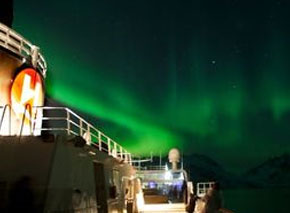Effects Of The Northern Lights
The northern lights may not have much of an effect on things that are of interest to us on a daily basis; however, the northern lights do more than just put on a brilliant light show.
Effects in the sky
The main effects of the northern lights are seen in the sky in the northern hemisphere close to the artic circle. The brilliant colors illuminate the sky from green to red and other colors in between. Solar winds help move the illumination in the sky so it looks like dancing lights against the dark night sky.
Tourists from all over the world travel to the region to try to get a glimpse of the northern lights which effects tourism. The list below is the most common and best places to see the northern lights; however, other tour companies offer other locations.
Tourism increases in the autumn months for viewing the northern lights in the following countries:
- Alaska
- Canada
- Finland
- Greenland
- Iceland
- Norway
Effects on the atmosphere
The only effect that is often found in our atmosphere is a bit of ionization at the location of the aurora or collision. The most important effect occurs at altitude ranges of 60 to 125 miles where the light that brings on ionization also brings on heating. The heating occurs from movement of the charged atoms. Inside the aurora, you will also find wind, which can blow at a hundred miles per hour. At this time, there is speculation that this occurrence has an effect on space weather; however, more research is needed to learn the true effect.
The northern lights are far from the earth even though they look close enough to reach. Since the collision of the solar particles and the atoms are done far from the earth, there is no reason to believe it will affect our weather at this time. However, as stated before, speculation is that the future climate of the earth could be affected possibly due to the frequency of the northern lights along with magnetic storms that occur at the polar caps.
Effects on radio waves
Since ionization can occur several feet from the aurora, it can have an effect on radio wave propagation. This can stop ham radio operators from transmitting far or receiving signals from a distance. This only occurs during the appearance of the northern lights with all transmission returning to normally after the event.
Effects on the weather
Even though the northern lights do not affect the weather on earth at this time, the effects in the upper atmosphere may lead to climate changes on earth in the future.
Once the ionization occurs, the electric properties change, which creates a current that flows rather easily. Along with this current, there is also a current between the ionosphere and the magnetosphere. All of these currents combined create the heating, which can be carried by the winds. These occurrences do not reach earth but may bring changes to space weather as well as to magnetic storms, which changes the magnetic field.

